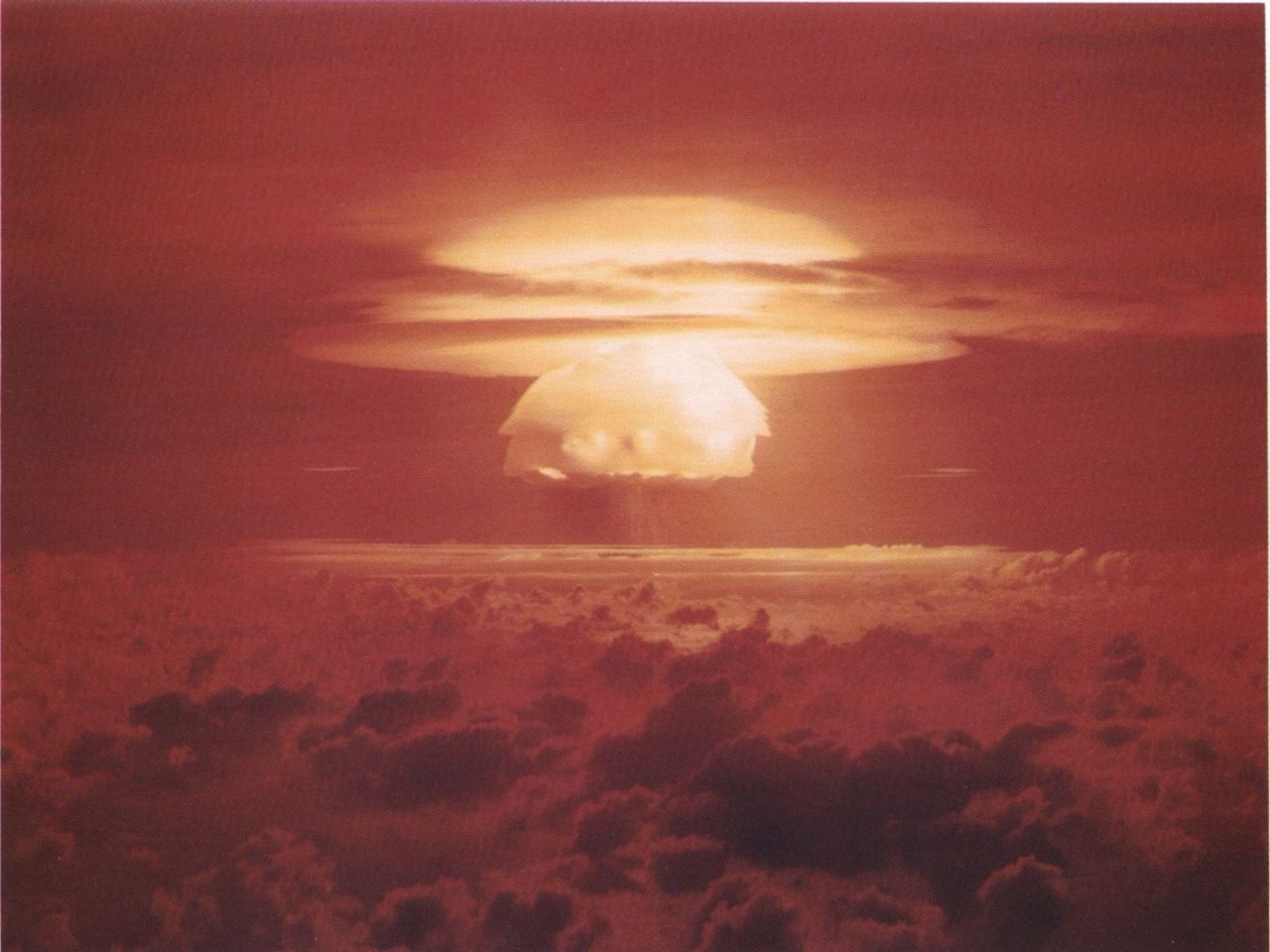3 Reasons The U.S. Needs To Get Serious About Terrorists With Drone Tech (Nukes On A Budget)
What happens when a terrorist group or unstable regime gets its hands on one? Could they use a drone to deliver a weapon of mass destruction over a civilian population?


The United States is setting the precedent, intentionally or otherwise, that unmanned aerial vehicle (UAV) technology can be used freely to track and attack enemies of the state with little consideration of state sovereignty. But what happens when a terrorist group or unstable regime gets its hands on one? Can they use the same technology to attack our leaders on foreign soil? Could they use a drone to deliver a weapon of mass destruction over a civilian population? The answer is a distinctly troubling possibility. The American monopoly on the use of unmanned aerial vehicles for precision strikes may be nearly over. Countries such as China, Russia, and Iran have made recent advances in UAV technology and successfully fielded a number of systems, hoping to mimic their Western rivals. This continued proliferation of drone technology has brought about a time in which the United States must establish a national and international framework considering both the rules of engagement and the code of conduct it wishes to implement in regard to unmanned aerial vehicles in the future global battlefield.
In short, the United States must prepare for being the prey, not just the predator as rival states are developing UAV systems designed for combat and covert missions. While the capabilities of many of these platforms are disputed, Iranian officials claim their aircraft is capable of carrying a military payload of rockets to execute bombing missions against ground targets, flying long distances at a high speed, and gathering information. Additionally, China is developing a full range of UAV systems, such as high-speed UAVs designed for military combat. With the development of these systems by over 70 different states, the United States will need to prepare for new threats and reevaluate its current unabated usage of precision UAV strikes abroad.
Under that assumption, there are several key issues the United States should address:
1. The CIA needs to stop treating the World as the Wild West
One way to increase transparency, toughen the criteria for drone strikes, strengthen the program’s accountability, and limit collateral damage is the consolidation of drone operations under the Department of Defense. Currently the United States Government has “twin” drone programs that have created confusion regarding United States Armed Forces and CIA missions. The CIA and its contractors largely focus on targets in Pakistan, the Pentagon qualifies targets in the Afghanistan battlefield, and the origin and management of targeted attacks in Yemen and Somalia are contested between the two groups. This convoluted system creates an atmosphere in which the CIA is encroaching on the mission of the United States Air Force and violating the sovereignty of certain states.
On a formal legal basis, the Department of Defense conducts strikes under Title 10 of the U.S. Code, which governs military operations, rather than Title 50, which sets out the legal authorities for intelligence activities and covert operations. Therefore, the Department of Defense has legal and institutional context through international military law unlike strikes executed by the CIA. While the CIA is required by law to “promptly” notify the House and Senate intelligence committees of every strike; the agency is not required to submit any data concerning the number of civilians killed or the process in which it determined a target’s legitimacy. To ensure compliance with international military law, the United States should theoretically conduct investigations of targeted killings in which there is credible evidence of wrongdoing, provide compensation to all victims of unlawful strikes, and discipline or prosecute as appropriate those responsible for conducting or ordering illegal attacks. Additionally, to maintain transparency it is crucial that the Department of Defense return to monitoring the number of casualties as well as the number of weapons dropped from unmanned aerial vehicles that are engaged around the world.
2. A UAV could deliver a WMD, so treat it like one.
To prevent rapid and continued proliferation of unmanned aerial vehicles the United States must initiate bilateral talks with its economic and military partners – particularly Israel, Italy, and Austria – as well as continue to press for new arms control regimes surrounding unmanned technology. Currently Israel is the preeminent unmanned aerial vehicle manufacturer outside of the United States and is responsible for mass proliferation. While many of the states purchasing Israeli technology are American allies, including Germany, France, and the United Kingdom, Israeli companies are also spreading the technology to non-traditional powers such as India, Russia, Azerbaijan, and Georgia. Austrian and Italian manufacturers have also been found selling UAV solutions into the Middle East and Persian Gulf regions to states like the United Arab Emirates and Pakistan. In order to help ensure future security, the U.S. must step up bilateral negotiations and better communicate the view that unmanned aerial systems are a unique technology that should not be spread beyond trusted allies.
To further the view that unmanned aerial technology is uniquely dangerous, the United States must continue to push for new arms control and/or non-proliferation regimes. For example, as a first step in addressing advances in unmanned technology, the United States proposed several changes that would include unmanned aerial vehicles within the Missile Technology Control Regime (MTCR), yet was unsuccessful. Principally, the United States originally focused these efforts through the MTCR because it addressed the potential use of UAVs to deliver weapons of mass destruction. However, overall aims were much higher. According to documents provided by the Department of State, the United States proposed six UAV-related changes to the MTCR Annex, mainly focused on moving some UAVs from category I to category II, but members accepted only one pertaining to controls on turboprop systems used in Category I UAVs and inertial navigation systems in Category II UAVs. Nevertheless, the United States cannot accept this failure. While current efforts to restrict the proliferation of unmanned systems have been initiated through the MTCR and the Wassenaar Arrangement on Export Controls for Conventional Arms and Dual-Use Goods and Technologies, the State Department must examine additional vehicles to monitor technology sharing amongst states that are not party to those agreements.
3. Make the rules while you still can.
While increasing transparency of the American drone program at home may ease some tensions, the key is establishing a new set of norms around targeted strike applications. “Getting agreement on the applicability of existing humanitarian law to the new technologies is crucial,” because China and Russia do not endorse applying laws of armed conflict to new military technologies. As unmanned aerial vehicle technology becomes more ubiquitous the United States should utilize the United Nations to attempt to deter nations from targeting the political leaders of other nations. It must be established that like all instruments of war, drones should be used in matters of self-defense in accordance with international law. Furthermore, as with historical bombing campaigns, every attempt should be made to limit collateral damage.
As military technologies evolve, so must the rules and frameworks nations use to implement them. Over 50 states currently have unmanned aerial vehicle programs, but no actor has implemented targeted strike capabilities like the United States. Therefore, before targeted strike capabilities become wholly pervasive, the United States must take the lead and begin to show greater restraint in its precision strike campaigns. Furthermore, once U.S. policy has become more transparent, the United States must initiate new measures in attempting to limit proliferation of UAV technology to “rogue” states and non-state actors, while simultaneously working with international partners to set new norms regarding targeting protocol and doctrine. ![]()

